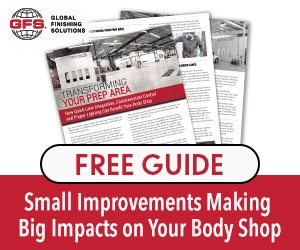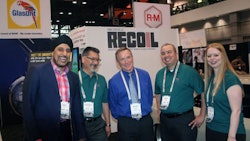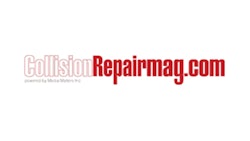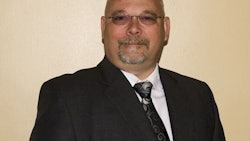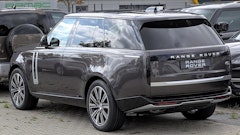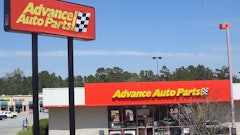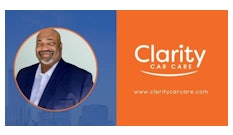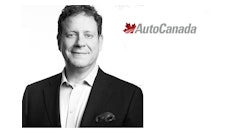
By Mike Kennelly
It’s a tough situation to be in, trying to have a sober view of vehicle technology and its implications to the collision repair field and making the right investments on equipment for your collision facility. If you have ever sat in an I-CAR Vehicle Technology and Trends class, you understand that vehicles aren’t exactly getting easier to work on as time passes.
Headlines like “GM says new Silverado reduces repair complexity” don’t necessarily mean fixing the vehicle just got easier, rather that this vehicle has been engineered with reparability in mind (which is great to see). Not to mention all the talk on the new F-150 and how it is putting the spotlight on aluminum repair tools and techniques in a way never seen before.
I teach a collision repair structural sectioning course which covers a large amount of new repair /sectioning considerations, joining techniques and some of the oddball or niche repair methods manufacturers are recommending in their procedures. Going through the various manufacturers repair recommendations, it becomes evident that since the new OEM CAFE standard realization, vehicle materials are getting more complex to repair.
The frequency that a shop would encounter some unconventional procedures is generally going to be low. The vehicles that require them are generally special repair vehicles requiring endorsements from OEMs to be approved to fix the vehicles. If the vehicle was a higher production vehicle it could be that the areas on the vehicle that would require these procedures aren’t regularly fixed as is the case with upper rail damage. Whether it’s the Honda accord, Land Rovers or Jaguars silicone bronze welding procedures, or some of the SPR (Self Piercing Rivet) procedures for BMW, Jaguar or the new F-150.
One thing I cannot honestly understand is how a collision repair facility could even know where to begin, without accessing the required OEM information to know what type of equipment to buy. There is no general repair buyer’s guide. Marketing would suggest that you need it all … yesterday!
OEM approvals generally have a number of approved repair equipment options. But what isn’t being said is that there are numerous “approved” ways of doing one repair. BMW has its no heat SPR bonding procedures, yet states within its repair manuals that some areas can be repaired with resistance spot welding. It’s a very similar story with the F-150. The majority of that vehicle can be repaired without the use of a SPR gun or an Aluminum MIG welder.
I’m not of the mind that all collision centres should rush out and buy up all the equipment to repair every vehicle, but consider the frequency of that repair method and if there is a return on investment for you to justify the purchase. This point will require extremely careful consideration to know what is right for your shop and your repair market.
There’s a good policy that most floor technicians will be familiar with. If you borrow or use someone else’s equipment or tools, its harmless to do so once, maybe twice, but the third time you’re using that tool, it better be one you just bought.
What I’m trying to say is, if you are unsure that you will end up doing that sort of work, it’s a much smarter investment to sublet that part of the job for the first couple to get an idea on frequency if you don’t have past figures to go on. If you end up actually requiring that equipment or tool, then do your homework and get the one that meets your needs.
Buying a piece equipment is a daunting task on its own with lots to consider: how much will it cost? How often will it get used if I do buy it? What are the various pros and cons to the dozens of models available on the market? Will something new come out in the near future that will better meet my needs? What kind of durability does it have? Will I need to have it serviced frequently? Can we service it ourselves? Warranties? Subscriptions? Updates? What about return on investment? A good example of this would be resistance spot welders, average price range of $20,000 to $60,000, but they are pretty commonplace in high turnover shops. Repair procedures are starting to lean on the side of less heat for inner heat sensitive steels.
One great input to purchase equipment is to have your technicians discuss what equipment could be used. We hosted an evening at the college for area shops and its technicians( see Caruk& Associates bring Aluminum Clinic to London – ed.). One of the things that you occasionally heard the odd body tech say “that would make the repairs much easier” or “why didn’t we get one of those instead.”
In the education side of things, we have pressure to stay on the learning curve of what is up and coming and what’s here. It’s a difficult task to keep with what is actually practical to have in house. As the new technology affects us, here is a list of some of the things we have either purchased or are looking at purchasing to keep current.
220V Pulse MIG welder with a bottle of argon gas – They are triple or more the price of a standard MIG welder, but have the added advantages of being far better at welding higher grade steels, versatility to weld silicone bronze wire more accurately than a standard short circuit MIG, and are the required format of welder for Aluminum MIG welding. You should be able to stock the various wire types and within five minutes be setup for a new welding wire.
3 Dimensional measuring system – Conventional measuring methods are not accurate enough for measuring height nor are they sufficient for some insurance companies who want you to prove your structural repairs with before and after measurements and photographs.
Squeeze type resistance spot welders – If the late model SUV/car market is commonplace, you would find that when used properly and efficiently, a STRSW is a great tool that produces clean quick work.
Cheap cosmetic damage aluminum repair tools
Steck Hammer and Dolly Covers – Good alternative to buying an additional set of hammer and dollies for aluminum repair.
Heat gun – To soften aluminum for cosmetic repairs.
There is so much more to say about purchasing tools and keeping “appropriately” ahead of the curve to avoid having the most expensive dust collectors sitting in the corner of your collision repair facility. I would be more than happy to discuss purchasing equipment further. Please feel free to contact me for further discussion.
Mike Kennelly Is the Program Coordinator and Professor for Auto Body Programs at Fanshawe College, located in London, Ontario, Canada. Mike owned a custom painting business for 5 years while working on getting his 310B to become a licensed collision and damage repair technician, working in an aluminum certified repair facility for 7 years. Followed by teaching in the college, where he has been for 5 years. Mike works with area industry representatives on numerous apprentice and post-secondary training initiatives.



